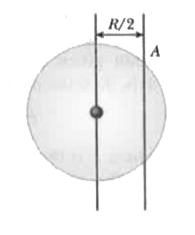An object comprises of a uniform ring of radius R and its uniform chord AB (not necessarily made of the same material) as shown. Which of the following can not be the centre of mass of object
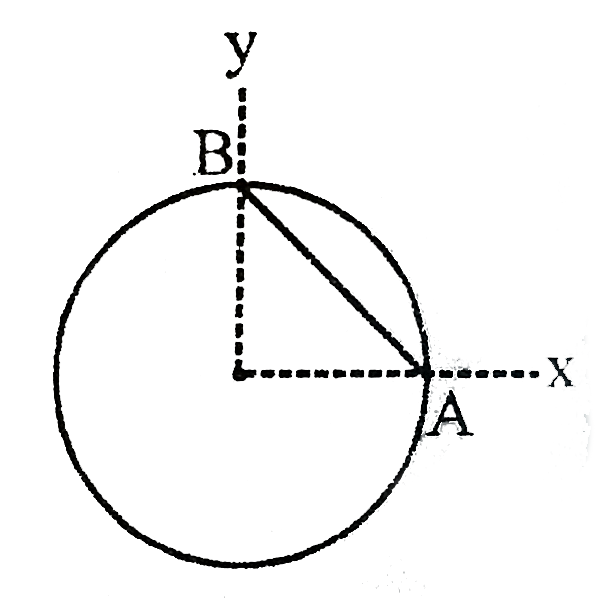
(R/3,R/3)
(R/3,R/2)
(R/4,R/4)
(R/√2,R/√2)
The correct Answer is:B
C.M. of system lie on straight line of slope 1 and lie between centre of circle and centre of rod.
Topper's Solved these Questions
- CENTRE OF MASS & MOMENTUM CONSERVATIONBOOK - BANSALCHAPTER - CENTRE OF MASS & MOMENTUM CONSERVATIONEXERCISE - EXERCISE-2[MATRIX TYPE]
2 Videos
- CENTRE OF MASS & MOMENTUM CONSERVATIONBOOK - BANSALCHAPTER - CENTRE OF MASS & MOMENTUM CONSERVATIONEXERCISE - EXERCISE-3 (Miscellaneous Exercise)
30 Videos
- CENTRE OF MASS & MOMENTUM CONSERVATIONBOOK - BANSALCHAPTER - CENTRE OF MASS & MOMENTUM CONSERVATIONEXERCISE - EXERCISE-2 [REASONING TYPE]
10 Videos
- GRAVITATIONBOOK - BANSALCHAPTER - GRAVITATIONEXERCISE - EXERCISE -4 Section - B
6 Videos
Similar Questions
Knowledge Check
For a uniform ring of mass M and radius R at its centre
Afield and potential both are zeroBfield is zero but potential is GMRCfield is zero but potential is −GM/RDmagnitude of field is GMR2 and potential −GMRA rod is made of uniform material and has non-uniform cross section. It is fixed at both the ends as shown and heated at mid-section. Which of the following are not correct?
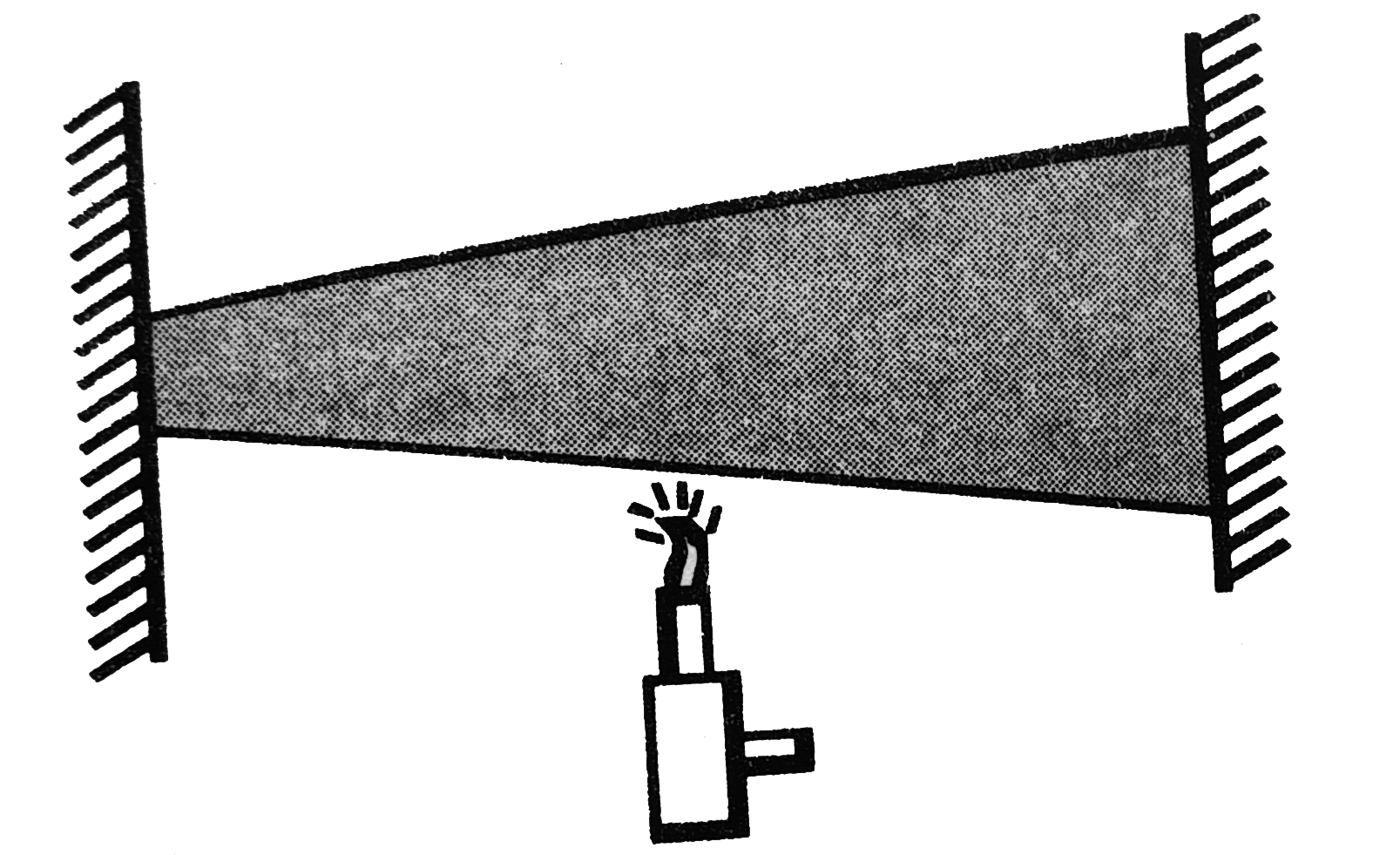 AForce of compression in the rod will be maximum at mid sectionBcomressive stress in the rod will be maximum at left endCsince rod in fixed at both the ends, its length will remain unchanged. Hence, no strain will be induced in it.Dnone of these
AForce of compression in the rod will be maximum at mid sectionBcomressive stress in the rod will be maximum at left endCsince rod in fixed at both the ends, its length will remain unchanged. Hence, no strain will be induced in it.Dnone of thesethere is a rod AB of uniform cross section and its centre is C. In which of the following case(s) centre of mass of the rod may lie at C.
ADensity of the material of rod increases continuously from A to B.BDensity of the material of rod increases continuously from B to A.CDensity of the material of rod increases from A to C and then decreases from C to BDDensity of the material of rod decreases from A to C and then increases from C to B.
A quarter ring of radius R is having uniform charge density λ. Find the electric field and potential at the centre of the ring.
View SolutionA system consists of a thin ring of radius R and a very long uniform wire oriented along axis of the ring with one of its ends coinciding with the centre of the ring. If mass of ring be M and mass of wire be λ per unit length, calculate interaction force between the ring and the wire.
View SolutionFind the moment of inertia of a half uniform ring (mass m, radius r) about its center.
View SolutionThree thin uniform rods made of same material are joined as shown. Locate x coordinate of COM.
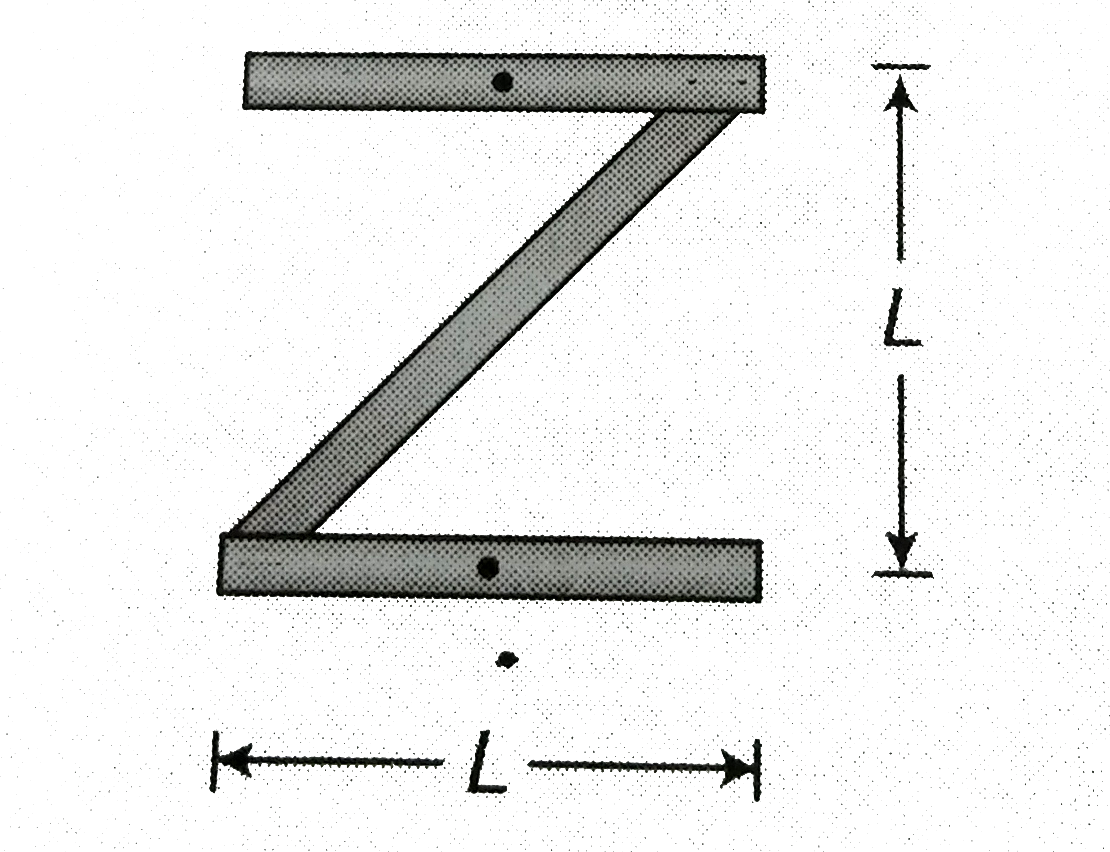
View SolutionA uniform solid right circular cone of base radius R is joined to a uniform solid hemisphere of radius R and of the same density, as shown. The centre of mass of the composite solid lies at the centre of base of the cone. The height of the cone is
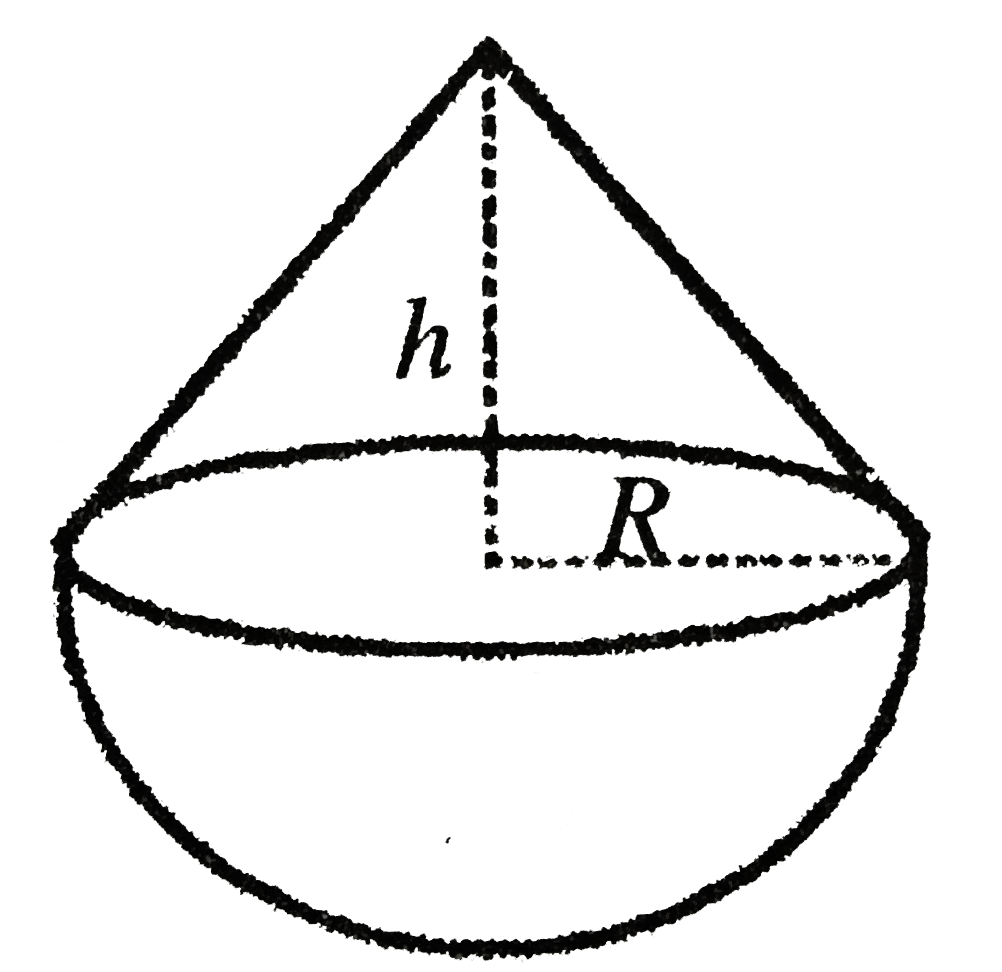
View Solution

